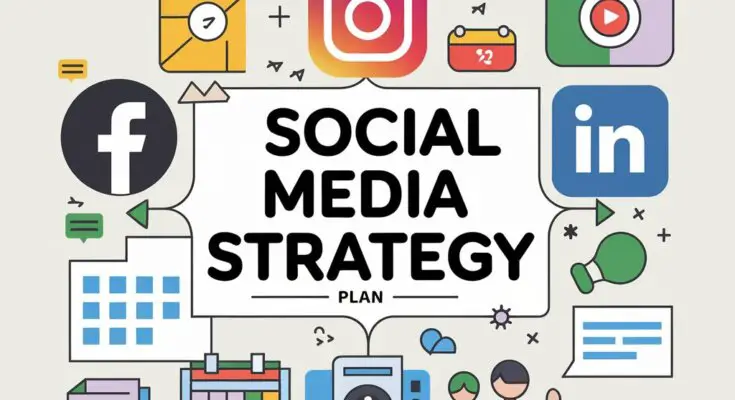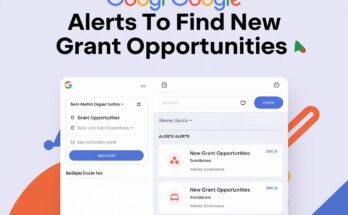In today’s digital age, social media has become an essential tool for nonprofits. It offers a unique opportunity to connect with supporters, share your mission, and raise funds. But how do you navigate the vast landscape of platforms like Facebook, Twitter, Instagram, and LinkedIn? In this post, we’ll explore practical strategies for effectively using social media for nonprofits, ensuring that your organization stands out and achieves its goals.
1. Understand Your Audience
Before you start posting, it’s crucial to understand your audience. Knowing who your supporters are will help you tailor your content to meet their interests and needs. Start by asking questions like:
- Who are your current supporters?
- What causes do they care about?
- Which social media platforms do they use?
For example, if your nonprofit focuses on animal welfare, your audience might be pet owners and animal lovers. You can use Facebook and Instagram to share adorable photos and stories of rescued animals, which resonate deeply with your followers.
Tip: Use tools like surveys and analytics to gather insights about your audience’s preferences and behavior on social media. This information will help you craft targeted content that speaks directly to them.
2. Create Engaging Content
Once you know your audience, the next step is to create engaging content. The key to effective social media marketing is not just to inform, but to engage. Here are some types of content that can help you connect with your audience:
- Stories: Share personal stories of individuals your organization has helped. This emotional appeal can drive engagement and encourage followers to share your posts.
- Images and Videos: Visual content is highly shareable. Use eye-catching graphics, photos, and videos to draw attention to your cause. For instance, if you run a food bank, post photos of volunteers in action or videos showing the impact of donations on families in need.
- Interactive Posts: Encourage engagement through polls, quizzes, and questions. Ask your followers about their favorite memories with your nonprofit or what initiatives they would like to see next.
Practical Example
Imagine a nonprofit organization focused on mental health awareness. They regularly share video testimonials from people who have benefited from their programs. These videos not only inform viewers about the services offered, but also create a sense of community and connection.
3. Use Hashtags Wisely
Hashtags can significantly increase your content’s visibility. By using relevant hashtags, you can reach a broader audience interested in your cause. Here’s how to use hashtags effectively:
- Research Trending Hashtags: Use tools like Hashtagify or RiteTag to find trending hashtags related to your mission.
- Create a Unique Hashtag: Consider creating a unique hashtag for your nonprofit. For example, #EndHomelessnessNow can help your supporters easily find and share content related to your cause.
- Limit the Number of Hashtags: While hashtags are useful, don’t overdo it. Stick to a few relevant hashtags per post to avoid looking spammy.
Practical Example
Let me share a quick story about a small nonprofit that made a big impact through effective hashtag use. This organization, dedicated to environmental conservation, started using the hashtag #GreenFutureChallenge.
They encouraged followers to share their eco-friendly habits using this hashtag. The campaign went viral, with people posting photos of their sustainable practices and challenging friends to do the same.
This not only increased their visibility but also fostered a sense of community around their cause.
4. Leverage Different Platforms
Each social media platform has its unique strengths. Here’s a quick guide on how to leverage them:
- Facebook: Great for storytelling and building community. Use it to share events, updates, and success stories. Create a Facebook Group for supporters to connect and engage with one another.
- Twitter: Ideal for real-time updates and sharing news. Use Twitter to engage with other organizations, participate in relevant conversations, and post updates on fundraising campaigns.
- Instagram: Perfect for visual storytelling. Use Instagram Stories and Reels to showcase behind-the-scenes content, events, and daily activities of your organization.
- LinkedIn: Best for professional networking. Share updates on your organization’s achievements, job openings, and thought leadership content related to your cause.
Practical Example
A nonprofit focused on education might use Facebook for event promotion, Twitter for quick updates on legislative changes affecting education, Instagram for sharing student success stories, and LinkedIn for connecting with potential corporate sponsors.
5. Build Relationships
Social media is not just about broadcasting your message; it’s about building relationships. Engage with your followers by responding to comments, sharing their content, and thanking them for their support. Here are a few ways to build strong relationships:
- Personalize Your Responses: When someone comments on your post, respond with a personalized message. This shows you value their input and fosters a sense of community.
- Share User-Generated Content: Encourage your followers to share their experiences with your organization. Reposting their content not only recognizes their support but also builds trust among your audience.
- Host Live Q&A Sessions: Use platforms like Instagram Live or Facebook Live to host Q&A sessions. This allows followers to ask questions about your organization and feel more connected.
Practical Example
Consider a nonprofit that provides mental health resources. They could host a monthly Q&A session where followers can ask questions about mental health, receive advice from professionals, and learn more about the services offered. This interaction fosters trust and encourages more people to engage with the organization.
6. Collaborate with Influencers
Partnering with influencers can help you reach new audiences and enhance your credibility. Identify influencers who align with your mission and values. Here’s how to collaborate effectively:
- Research Potential Influencers: Look for individuals who are passionate about your cause and have a following that overlaps with your target audience.
- Create Joint Campaigns: Collaborate on campaigns that benefit both parties. For example, a nonprofit focused on youth empowerment could partner with a local influencer to host a workshop, creating social media buzz around the event.
- Leverage Influencer Content: Encourage influencers to share their experiences with your organization. This content can help attract new followers and donors.
Practical Example
Let’s talk about a nonprofit that successfully collaborated with an influencer. This organization worked with a popular lifestyle blogger who shared their passion for education reform.
The influencer created a series of posts about the nonprofit’s initiatives, encouraging her followers to donate and volunteer. As a result, the nonprofit saw a significant increase in donations and social media engagement.
7. Monitor and Analyze Performance
To understand what works, it’s essential to monitor and analyze your social media performance regularly. Here are some key metrics to track:
- Engagement Rate: Measure likes, comments, and shares to assess how well your content resonates with your audience.
- Follower Growth: Track how your follower count changes over time. This will help you understand which strategies are effective in attracting new supporters.
- Website Traffic: Use tools like Google Analytics to track how much traffic your social media is driving to your website.
By analyzing these metrics, you can refine your strategy and focus on the types of content that generate the most engagement.
Practical Example
If a nonprofit focused on animal welfare notices that posts featuring adoptable pets get significantly more engagement than general updates, they might consider increasing the frequency of these posts to maintain audience interest and support.
8. Run Targeted Campaigns
Running targeted social media campaigns can significantly enhance your outreach efforts. Here’s how to execute them effectively:
- Define Your Goals: Clearly outline what you hope to achieve with your campaign, whether it’s raising funds, increasing awareness, or mobilizing volunteers.
- Use Ads for Targeting: Consider investing in social media advertising to reach specific demographics. Platforms like Facebook and Instagram offer robust targeting options based on interests, location, and behaviors.
- Create Compelling Campaigns: Ensure your campaign messages are clear and compelling. Use powerful visuals and testimonials to illustrate the impact of donations.
Practical Example
A nonprofit focusing on child literacy could run a campaign encouraging donations to provide books to underserved children. They might create a compelling video showcasing the joy of reading, targeting parents and education advocates in their area.
Conclusion
Incorporating these strategies into your nonprofit’s social media efforts can significantly enhance your organization’s visibility and engagement.
Remember, social media is a powerful tool that can help you connect with supporters, share your mission, and ultimately drive your cause forward.
To stay updated on the latest strategies and tips for your nonprofit, subscribe to the Nonprofit Navigators Newsletter. You’ll receive expert insights and resources to help you thrive in the nonprofit sector.
Plus, don’t forget to download FREE, Top 10 Donor Stewardship Strategies for Nonprofits + Free Donor Engagement Checklist, to further enhance your fundraising efforts.




